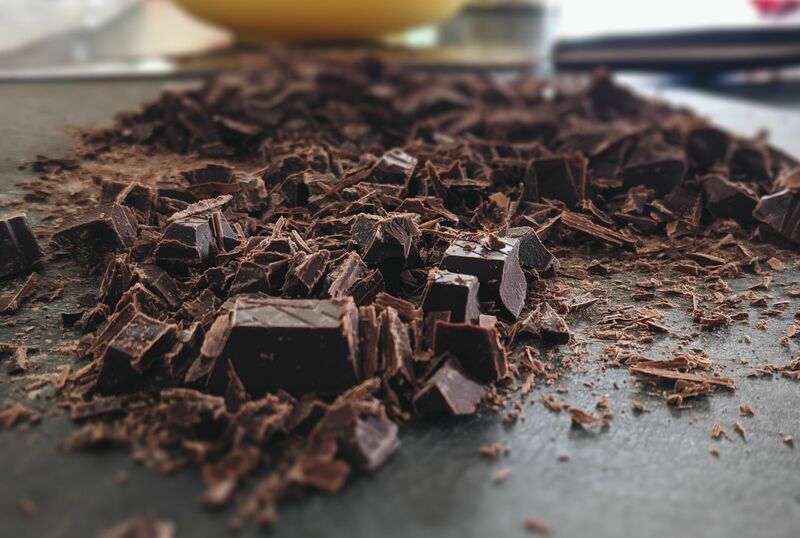
July ICE NY cocoa (CCN23) on Wednesday closed up +22 (+0.70%), and July ICE London cocoa #7 (CAK23) closed up +15 (+0.59%).
NY cocoa prices on Wednesday initially posted a 2-week low but then recovered to close the day moderately higher. Cocoa prices saw support from Wednesday's -0.46% sell-off in the dollar index, which was bullish for commodity prices in general.
Cocoa prices have underlying support from the recent heavy rain in the Ivory Coast, which made roads impassable and made it difficult for truck drivers to take cocoa beans from farms to port. However, conditions have dried out, and truck shipments to ports have resumed.
A bullish factor for cocoa prices is the reduced supply from the Ivory Coast. On Monday, the Ivory Coast government reported that farmers sent a cumulative 2.19 MMT of cocoa to Ivory Coast ports for the 2022/23 marketing year (October 1 through June 18), down -2.2% y/y. The Ivory Coast is the largest cocoa producer in the world.
New York cocoa futures could be vulnerable to long liquidation pressures. Last Friday's weekly Commitment of Trader’s (COT) report showed funds boosted their net-long NY cocoa positions by 15,989 in the week ended June 13 to a 3-year high of 73,890.
Cocoa prices also have support on concern that an El Nino weather event could undercut global cocoa production. On June 8, the U.S. Climate Prediction Center said that sea surface temperatures across the equatorial Pacific Ocean had risen 0.5 degrees Celsius above normal, and wind patterns have changed to the point where El Nino criteria have been met. Cocoa prices rallied to 12-year highs in 2016 after an El Nino weather event in 2015/16 caused a drought that hampered global cocoa production.
NY cocoa prices last month rallied to a 6-3/4 year nearest-futures (K23) high on quality concerns about the Ivory Coast mid-crop. Farmers have reported poor cocoa quality, with cocoa bean counts averaging 120 for every 100 grams. Exporters prefer counts of 80 to 100 for every 100 grams, with the best cocoa quality having the lower bean count.
Smaller cocoa supplies from Nigeria support prices after the Cocoa Association of Nigeria reported on May 24 that Nigeria's Apr cocoa exports fell -46% m/m and -20.6% y/y to 9,924 MT. Nigeria is the world's fifth-largest cocoa bean producer.
Signs of stronger global cocoa demand are bullish for prices. On April 21, the National Confectioners Association reported Q1 North American cocoa grindings rose +2.4% m/m but fell -4.4% y/y to 109,666 MT. On April 20, the Cocoa Association of Asia reported that Q1 Asia cocoa grindings rose +4.09% y/y to 222,028 MT. On April 13, the European Cocoa Association reported that European Q1 cocoa grindings rose +0.5% y/y to 375,375 MT, the highest for a Q1 since 1999. On April 19, a cocoa exporter group that includes six of the world's biggest cocoa grinders reported that its Q1 cocoa processing jumped +22% y/y to 189,405 MT.
On March 31, the Ivory Coast Agriculture Minister said that the Ivory Coast mid-crop, the smaller of the country's two annual harvests that began April 1, is expected to fall -25% y/y to 450,000 MT.
Cocoa prices have support from projections last month from the ICCO that global 2022/23 cocoa stockpiles would fall -3.5% y/y to 1.653 MMT. In addition, ICCO said, "The expectation of a supply deficit has been compounded with weather variations, especially in West Africa." On the bearish side, the ICCO forecast 2022/23 global cocoa production would climb +4.1% y/y to 5.017 MMT, and global cocoa grindings would fall -0.6% y/y to 5.027 MMT.
An increase in cocoa inventories is negative for prices after ICE-monitored cocoa inventories held in U.S. port warehouses rose to a 9-month high of 5,730,012 bags on May 22. Likewise, ICE-monitored cocoa inventories held in European port warehouses on May 15 rose to a 9-month high of 147,440 MT.
The quarterly report from the ICCO on December 1 was bullish for cocoa prices after ICCO said global 2021/22 cocoa production fell -8.0% y/y to 4.823 MMT as unfavorable weather and disease hampered cocoa yields. ICCO also revised its 2021/22 global cocoa production figure downward by -419,000 MT from September. ICCO also raised the 2021/22 global cocoa deficit to -306,000 MT from a Sep forecast of -230,000 MT. In 2020/21, global cocoa production rose to a record 5.242 MMT, and the global cocoa market was in a surplus of +209,000 MT.
On the date of publication, Rich Asplund did not have (either directly or indirectly) positions in any of the securities mentioned in this article. All information and data in this article is solely for informational purposes. For more information please view the Barchart Disclosure Policy here.






